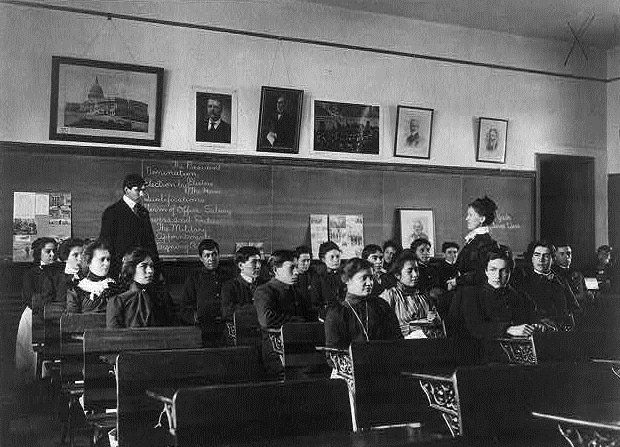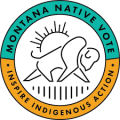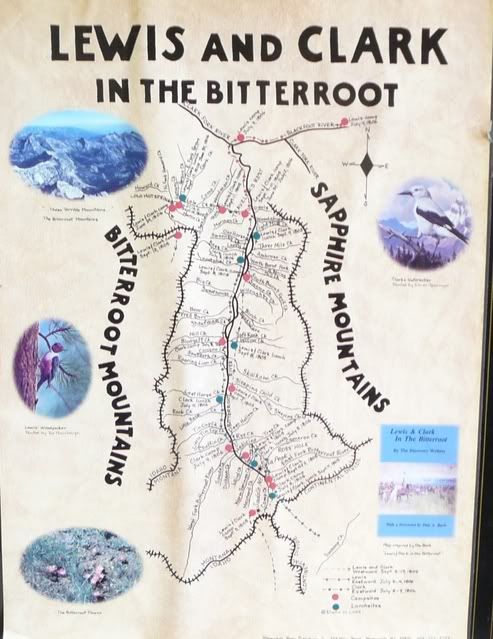
( – promoted by navajo)
Congress passed legislation in 1924 which gave all American Indians citizenship. While citizenship should imply the right to vote, the states often imposed barriers to allowing Indians to vote. In some instances they ignored-or simply pled ignorance of-the fact that Indians were citizens. In 1937 the Solicitor General conducted a study to find out why Indians were denied the right to vote. Colorado’s attorney general replied:
“It is our opinion that until Congress enfranchises the Indian, he will not have the right to vote.”
While many American Indian histories point to court cases in 1948 as the point at which Indians were finally granted the right to vote, many states continued to interfere with this right. States interfere with Indian voting rights in several ways: (1) restricting voter registration and polling places, (2) discouraging Indians from voting, and (3) gerrymandering.
Restricting Voter Registration:
In many states, such as Arizona, Montana, South Dakota, and others, many Indians live on reservations. As rural residents, this often means that Indians do not have a street address or mail delivery. Therefore, they use post office boxes in reservation communities as a mailing address. During his 2008 campaign for the Arizona House of Representatives, Chris Deschene (Navajo) faced a challenge to his nominating petitions that sought to take advantage of contradictions within Arizona’s election laws in order to disenfranchise rural PO Box voters by taking away their right to select and nominate their own candidates. The Secretary of State had the jurisdiction to step in and provide a solution for the discrepancy, but chose not to get involved. Chris didn’t hesitate to take the fight to court and won, protecting the rights of rural voters to participate and nominate their own candidates, regardless of their PO Box addresses.
In some western states, there has been a push to consolidate polling places under the guise of cost reduction. For Indians on reservations, this means a much longer drive to the polling places. This is not only a barrier of cost, but also means that some voters will have to lose time from work in order to vote. Thus, the number of Indians who turn out is reduced.
Discouraging Indians from Voting:
In 2002, the South Dakota state attorney general, working with the Federal Bureau of Investigation, announced plans to send state and federal agents to question 2,000 newly registered Indian voters. No similar action was taken regarding non-Indian voters and no charges regarding voter fraud were filed. Some Indian leaders felt that this was an attempt to intimidate Indian voters and to prevent them from voting.
Language can also be used to discourage Indians from voting, particularly in states which insist on “English only” and ignore Native languages. In 2008, a federal judge ordered effective language assistance for Yup’ik language speakers in the upcoming Alaska elections. The case stemmed from a lawsuit filed by the Native American Rights Fund and the American Civil Liberties Union on behalf of Alaska natives. The judge ruled that the Alaska Division of Elections should provide pre-election publicity and sample ballots in the Yup’ik language. According to the judge:
“The evidence of past short-comings justifies the issuance of injunctive relief to ensure that Yup’ik speaking voters have the means to fully participate in the upcoming state-run elections.”
In the 2010 elections in South Dakota, the attorney general has ruled that traditional Indian feeds in conjunction with voting are illegal. Aji has described this in more detail in her excellent account of the GOP Attempting to Suppress Native American Vote.
http://www.dailykos.com/story/…
Gerrymandering:
Following the census every ten years, the state legislatures will establish new voting districts which are supposed to reflect the geographic distribution of the population. Many state legislatures have used this process to make sure that very few Indian majority districts are created. Very often, they will divide a reservation into several districts, each of which is a part of a larger non-Indian district. With Republicans set to control a majority of state legislatures, we are likely to see the impact of Indian voting reduced for at least the next decade.
One example of this can be seen following the 1990 census in Montana. In 1996, Blackfeet tribal chairman Earl Old Person and several other tribal members filed a suit, Old Person v Cooney, in which they contended that the voting strength of Indians in the area encompassed by the Blackfeet Reservation and the Flathead Reservation had been diluted by the state’s redistricting plan. In the plan, the Blackfeet Reservation was divided between four house districts and the Flathead Reservation was divided between eight districts which made it difficult to get tribal members elected to the state legislature.
The district court dismissed the complaint, but did note that there had been a history of discrimination against Indians by the state and federal government. On appeal, the decision was reversed, but the court failed to find that the discrimination was purposeful.
Gerrymandering is used not only to reduce Indian representation in state legislatures, but also in local governmental entities. In 1999, the U.S. Department of Justice charged that voting practices in Roosevelt County, Montana were unfair to Indians. While Indians make up more than half of the population of the county there had never been an Indian elected to the County Commission. The voting districts within the county appear to have been drawn to exclude Indians from obtaining a majority in any of the districts. The Northern Cheyenne filed suit against Rosebud County (Alden v. Board of County Commissioners of Rosebud County).
In 1999, the Confederated Salish and Kootenai Tribes filed a suit against the Ronan (Montana) School district (Matt v. Ronan School District 30) charging that school district election practices diluted their voting strength in violation of the Voting Rights Act. As a result of the lawsuit the Ronan-Pablo school board added a new voting district in which Indian voters are the majority.
In 2002, the American Civil Liberties Union sued the City of Martin, South Dakota on behalf of two Sioux tribal members. The suit alleged that the city’s redistricting plan violated Indian voting rights. The city responded by adopting a plan that further fragmented the Indian vote in order to give non-Indians an overwhelming majority in the city which is 45% Indian. In 2006, the U.S. Circuit Court of Appeals ruled that the town of Martin had violated the Voting Rights Act by diluting voting districts that left American Indian voters without political power.




They (sorry, we) were considered members of separate nations, for most legal purposes. The more legalistic British view of the Discovery Doctrine was quite a bit different than how the Spanish and Portuguese viewed things.
This separation is one reason why, Mexicans are not often thought of as being Native, despite having higher ‘blood quantums’ than many American Indians. Most Mexicans are of Native blood, but the Spanish who conquered them .. did not think of them as ‘nations’ per se. They just assimilated them into the Catholic church, or killed them, and took what they wanted. No treaties necessary.
And yes, Native voting has always been supressed by those in power, period. Natives have always been smart voters.
“Say what you will about White People, but they are here to stay.”